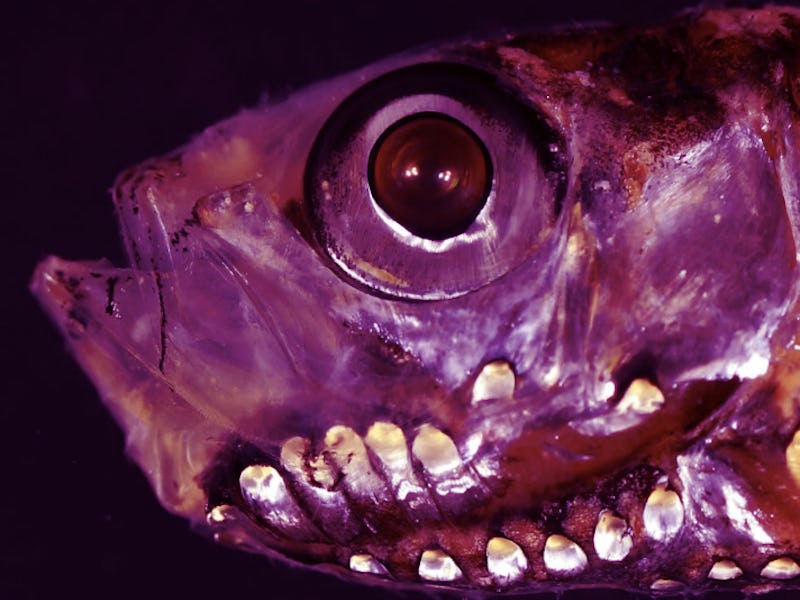Evolution Gave This Freaky Little Fish the Strangest Eyes in the Ocean
Pearlsides refuse to be kept in the dark.

Whether you’re looking in the depths of the Bay of Fundy or the Eastern Indian Ocean, you’ll find pearlsides, tiny fish with silver-white sides that live in the dark, 900 feet below the surface of the sea. They may seem unremarkable at first, but all over the world, at dawn and dusk, they leave the deep ocean to forage for meals at the bright surface. This transitionary life, researchers report Wednesday in Science Advances, has given pearlsides extremely weird eyes, which have adapted to work in both conditions while their deep-sea peers are suited only for the darkness.
In the paper, researchers from the University of Queensland show that pearlsides have one unique type of retinal cell that exhibits properties of both light-sensing and color-sensing cells. Most animals have two types of photoreceptor cells, the neurons found in the retina, whose job is to kick off the process of seeing: the rods, which are sensitive to light and don’t discern color, and the cones, which are responsible for color vision in bright light.
But somewhere along their evolutionary journey, pearlsides managed to streamline its seeing process.
Fluorescent light reveals the bioluminescent qualities of pearlfish.
While most vertebrates, like humans, have rods so they can see in dim light and cones so they can see in the daytime, deep-sea fish are different. Because most of them live below depths of 600 feet, where light from the sun can’t penetrate, most of them actually have no cone cells and rely solely on their rods.
Pearlsides were previously thought to have only rods as well, but it turns out they’re in a class of their own: Instead of a combination of rods and cells, both aspects of those cells are combined into a single photoreceptor cell.
This discovery, study co-author Justin Marshall, Ph.D., said in a statement released Tuesday, “improves understanding of how different animals see the world and how vision might have helped them conquer even the most extreme environments, including the deep sea.”
Pearlsides have novel photoreceptor cells.
Marshall and his colleagues discovered the unusual nature of pearlside eyes by analyzing the pigment genes in the retinal cells of two species of pearlsides, Maurolicus muelleri and Maurolicus mucronatus. They found that the fish had a photoreceptor transmutation that allowed the rod-like cells to exhibit both rod and cone cell properties. The scientists think this transmutation is an evolutionary adaption that allowed the fish to continue its feeding habits. Because pearlsides feed in bright surface water then return to dark waters during periods of lower activity, this mutation optimizes its vision in all situations.
This discovery, the scientists note, raises further questions about how vision works in a variety of light conditions. But it mostly makes the pearlside — already part of the freakiest animal world — even stranger.